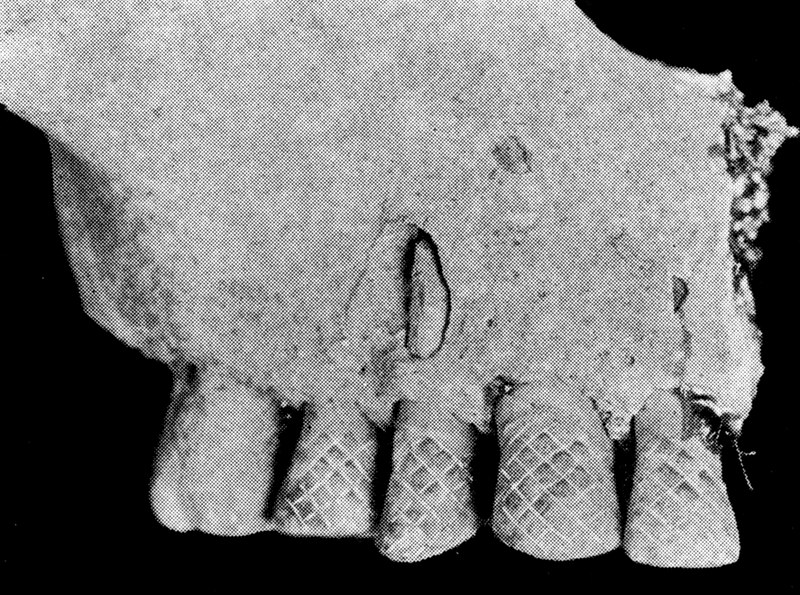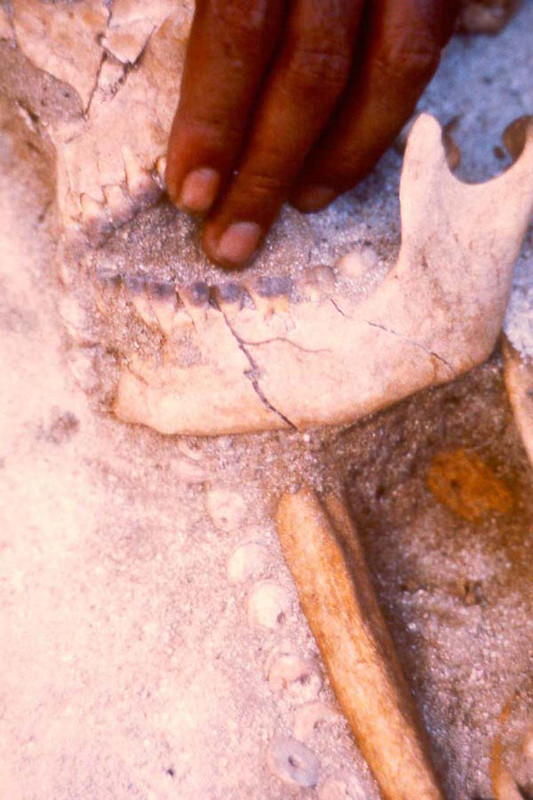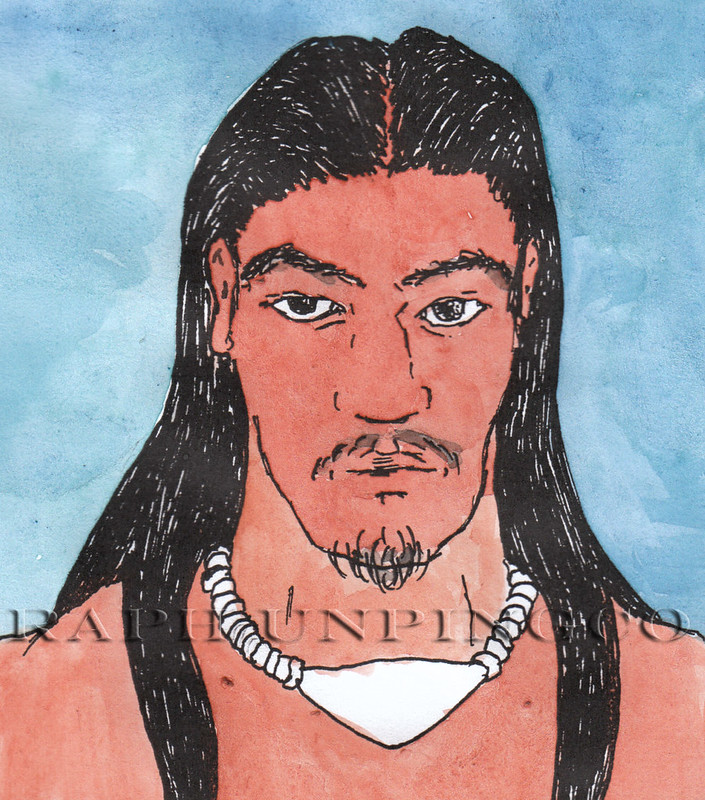Beauty as a cultural concept
Different cultures have different ways of defining and understanding “beauty.” In general, beauty is a characteristic of a person or object that people find appealing. Beauty evokes an experience of pleasure or satisfaction. People often compliment or emulate (imitate) what they perceive as beautiful, whether it’s following the latest clothing fashion trends, adopting particular hairstyles or using body ornamentation, such as wearing jewelry or other decorative accessories. Sometimes, people modify their bodies, such as tattooing their skin, or inserting objects to change the shape of their lips or earlobes, as custom or tradition dictates.
Because our ideas of beauty vary from culture to culture, we can say that beauty is culturally constructed. In other words, how an individual conceptualizes what is beautiful depends largely upon the accepted preferences of the individual’s social group or cultural upbringing. In fact, the cultural traditions of a society often present the occasions, contexts and meanings in which certain styles of clothing, costumes and body modifications are appropriate and for whom. For example, a society may decide that it is appropriate only for men, and not women, to wear tuxedos for formal occasions such as weddings, proms or awards banquets. Scary costumes in the United States are worn on October 31st or Halloween. On Guam, young children receiving the rites of baptism into the Catholic Church are dressed in white gowns. Indeed, rules like these reflect what a society considers proper or acceptable in a particular social context.
What one group considers beautiful may be seen as ugly or offensive to another, but again, these are based on each society’s cultural ideals and values. For example, when the Spanish first arrived in the 16th century, they were taken aback by the nakedness of the CHamoru people and often wrote about the way they wore their hair or colored their teeth black in disparaging or unfavorable descriptions. When the CHamorus began to dress in Western style clothing, they favored those pieces that they deemed beautiful or most European, such as breeches (pants), sleeved vests, silver rings and earrings.
Not only do our notions of beauty and fashion vary from culture to culture, but they also change over time. Styles come and go as our ideas of what is beautiful or appealing are modified or evolve. While today, we follow the fashion trends of Western culture, with its corresponding rules of “proper” dress for men, women and children, sometimes, even these rules can get blurry.
But what might the ancient CHamorus have considered beautiful or fashionable? What did they wear? How did men and women decorate their faces, hair and bodies, and how did their appearance change over time? Archeological records and early accounts by Spanish explorers to the Mariana Islands give some answers to these questions.
Hairstyles and teeth staining
Records of ancient CHamoru lifestyles go back to the early contact period, beginning with Ferdinand Magellan’s visit of 1521. Archeology reports from excavations substantiate some of these observations and provide additional information.
The explorer Ferdinand Magellan was the first recorded European to make landfall in the Marianas in 1521 during his circumnavigation of the globe. Antonio Pigafetta, who chronicled the visit, first described the natives they encountered as naked, and that some of the men were bearded. According to Pigafetta, both men and women had black hair that reached to the waist or longer. They also wore small hats woven from palm leaves. Their teeth were red and black, which they considered most beautiful. Although the women were mostly naked, they did cover their pubic area with a narrow strip of paper thin bark, which grows between the tree and the bark of the palm. In addition, they anointed their bodies and hair with coconut and “bene” seed oil.
The description of the CHamoru practice of coloring their teeth red or black was a reference to their chewing of betel leaf (Piper betel), areca (betel) nut (Areca catechu), and quicklime, which produces a bright earthy red juice and stains the mouth red. Over time the juice stains the teeth black. Archeological research has found a few examples of blackened teeth with decoration etched in the tooth surface. An account from the Loaysa expedition in 1526 stated that CHamorus blackened their teeth with the sap of a certain plant, unknown to the writer. Another account from 1590 described the teeth as being:
…sharpened like those of a dog and more so, and they stain them with a red varnish that cannot be removed and which is to preserve their set of teeth; they never lose one tooth no matter how old they are. Others stain them black, which has the same property as the red [varnish].
Jesuit priest Father Peter Coomans described the process of staining a woman’s front teeth which was practiced in the 1670s:
In order to do this, they spend some sweat; they mix black coloring with some gum to make it long lasting. They often reserve an entire day to anoint that one tooth; nevertheless, this care and above all this time, taken for this unction will take up as many as fourteen days, during which time the teeth must not touch anything. That is why they suffer a continuous torment, with only a funnel, to give sustenance to their body, so as not to die. When the effect has been obtained, the neighbors and friends organize a formal feast…
Body coverings
Although the CHamoru people were described as naked, the Loaysa account of 1526 further elaborates on the description of women’s body covering. While the men walked around “naked in the flesh, exhibiting their natures,” the women covered their pubic area with some tree leaves held in place by a string around their waist. The leaf:
… swings from side to side in front of their nature. Because sometimes the wind carries away that leaf, they always carry other leaves as spares.
Fray Juan Pobre de Zamora, a missionary who lived among the Chamorros in Rota in 1602, wrote that:
Only the females who are more than eight or ten years old wear an appropriate piece of turtle shell or a plant leaf the size of one’s hand to cover their nakedness.
Yet, a report by Fray Antonio de los Angeles, another missionary who had lived among the CHamorus in 1596, stated that the women wore a type of matting below the waist. This suggests that their clothing, in some situations, might have been more substantial than a piece of bark fiber, as initially described by Pigafetta.
Changes in hairstyles
It seems likely that the CHamoru people, in the few years after European exploration in the Marianas began, exhibited changing hairstyles. A report in 1535 by Augustinian priest Andres de Urdaneta, who traveled with the Loayasa expedition, states that:
Both women and men wear their hair very long and loose.
However, a change in hairstyles apparently occurred between this report of 1535 and an account from the English privateer Thomas Cavendish’s visit in 1588, which described the Chamorros as:
…wearing their haire marveilous long; yet some of them have it made up and tyed with a knot on the crowne, & some with 2 knots….
A few years later, it seems apparent that CHamoru women were also practicing techniques to change their hair color, primarily by bleaching. Fray Juan Pobre’s account notes that:
…the men like their hair to be very black; the women, however, have very flaxen hair.
Since Pigafetta’s account states that both the men and women wore their hair long and black, it may be assumed here that the “flaxen-haired” women of Fray Juan Pobre’s time were practicing a fashion of this particular period, eighty years later. Father Peter Coomans’ writing of the 1670s describes the way women bleached their hair:
They anoint the whole head and their hair with a mixture of lime and oil, then expose themselves to the burning rays of the sun at noon, for hours, rather, for days on end. Whenever the head is burning hot, they sprinkle it with sea water, if you look at it, you show your appreciation.
Historian Father Francisco García’s description of the people in 1668 (based on Father Diego Luis de San Vitores’ and other missionary reports) also says that the women bleached their long hair white. He also noted that the only clothing women wore was an apron of thin bark called tifi’ [which means “pick” v.]. It is also from García’s account that we get the first description of the topknot worn by men, which is often depicted in modern artistic renderings of CHamoru warriors, including the statue of Chief Quipuha in Hagåtña. García stated that:
The men do not wear long hair, but shave their head leaving only a small topknot on the crown, about the length of a finger.
Other ornamentation
De Los Angeles (1596) remarked upon the native practice of anointing their bodies with coconut oil as protection from the rain. He further noted that upon entering one’s home, the visitor was given hot water with which to wash their feet. Fragrant flower garlands for women and the use of coconut oil for both sexes indicate that smell as well as visual enhancement of the body was valued.
Continuity and change
These descriptions of the CHamoru people span a period of over 150 years, beginning with Pigafetta’s account of 1521 and encompassing García’s writing, which described the early missionization period of 1668 to 1681. An analysis of the various descriptions can give us a general picture of continuity and change within the culture over several generations, during the time when colonization had not yet changed practices to a great extent.
To summarize, the general consensus throughout these accounts was that CHamorus were generally light-skinned, the men being darker than the women because of their greater exposure to the sun. They were generally robust and healthy people, who were somewhat larger than the average European.
Although hair fashions changed, accounts throughout this period emphasize that blackened teeth were considered beautiful. It is not clear whether men also consistently blackened their teeth throughout this time span, although constant betel nut chewing would create this effect in both sexes. By 1670, it seemed to be a prevalent practice among women, although that does not rule out men from also participating.
Observations in 1521 described both men and women as wearing their hair very long and black. Some men had beards, which are not mentioned in later descriptions. In 1588 men were observed tying their long hair into one or two buns at the top of their heads. By 1668, men’s fashion had changed to that of shaving their heads except for a short topknot about the length of a finger at the crown of the head. Beginning in 1602, women were observed with bleached hair, a practice which persisted until at least the 1670s.
Throughout this time span, men were described as being completely naked. Women were sometimes described as naked, but usually were observed wearing at minimum a leaf (tifi’) attached to a cord around their waist, or a piece of paper thin bark (gunot) which covered their private parts. In 1596 they were observed wearing a piece of matting which covered them from the naval down. The use of turtle shell plates as an apron suggests that status determined some forms of body covering.
Did you know?
Ornamentation – Some of the more interesting body ornamentation practices of the CHamoru people include teeth blackening, teeth etching, hair whitening, and body enhancements with oils and fragrances. All of these have been described in letters and reports by early explorers and missionaries.
Aesthetics – This dark coloration of the teeth was considered very beautiful by the CHamorus, especially women, although the missionaries could not fathom why they felt this way. Nevertheless, this is a good example of cultures that come in contact with each other might have different ideas about what is aesthetically appealing or not.
Sight & Smell – Jewelry and other body ornaments were not only considered prestige items that could be used as currency, but were also used and admired for their beauty and craftsmanship. Shell necklaces and belts of strings of Spondylus shells, or as well as turtle shell chains, pendants, breastplates and tifi’―which covered women’s pubic area―were highly prized, especially by elite CHamorus.
CHamorus’ notion of beauty not only appealed to the sense of sight, but also to the sense of smell. Indeed, the scent of fresh flower garlands and coconut oil was greatly appreciated.
For further reading
Cunningham, Lawrence J. Ancient Chamorro Society. Honolulu: Bess Press, 1992.
Driver, Marjorie G. “The Account of a Discalced Friar’s Stay in the Islands of the Ladrones.” Guam Recorder 7, no. 1 (1977): 19-21.
–––. The Account of Fray Juan Pobre’s Residence in the Marianas, 1602. MARC Miscellaneous Series no. 8. Mangilao: Micronesian Area Research Center, University of Guam, 1993.
Freycinet, Louis Claude Desaulses de. An Account of the Corvette L’Uraine’s Sojourn at the Mariana Islands, 1819. Translated by Glynn Barratt. Saipan: Commonwealth of the Northern Mariana Islands Division of Historic Preservation, 2003.
García, Francisco. The Life and Martyrdom of Diego Luis de San Vitores, S.J. Translated by Margaret M. Higgins, Felicia Plaza, and Juan M.H. Ledesma. Edited by James A. McDonough. MARC Monograph Series 3. Mangilao: Micronesian Area Research Center, University of Guam, 2004.
Lévesque, Rodrigue. History of Micronesia: A Collection of Source Documents. Vols. 1-6. Québec: Lévesque Publications, 1992-1995.
Nowell, Charles E., ed. Magellan’s Voyage Around the World: Three Contemporary Accounts. Evanston: Northwestern University Press, 1962.














